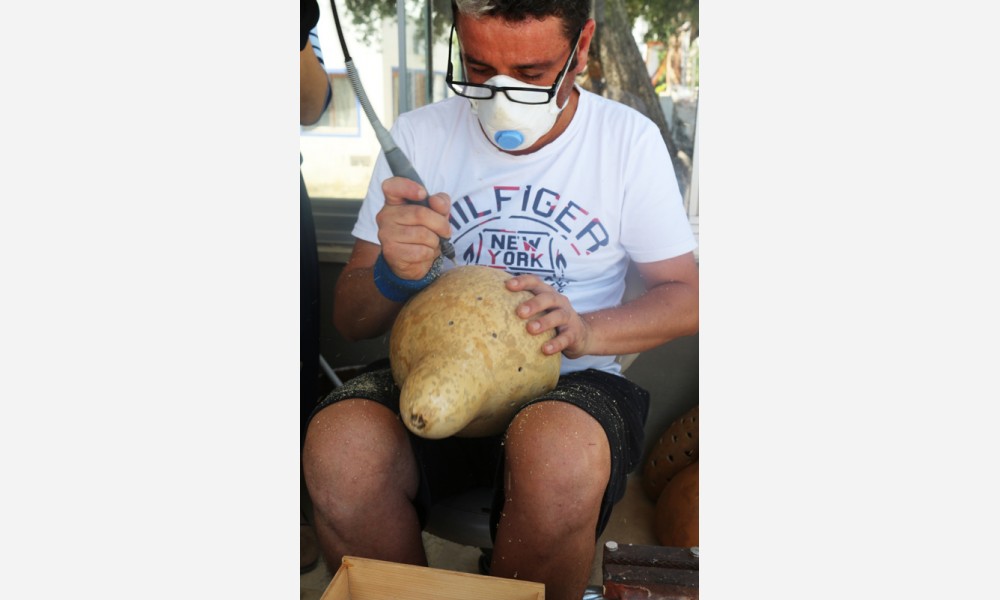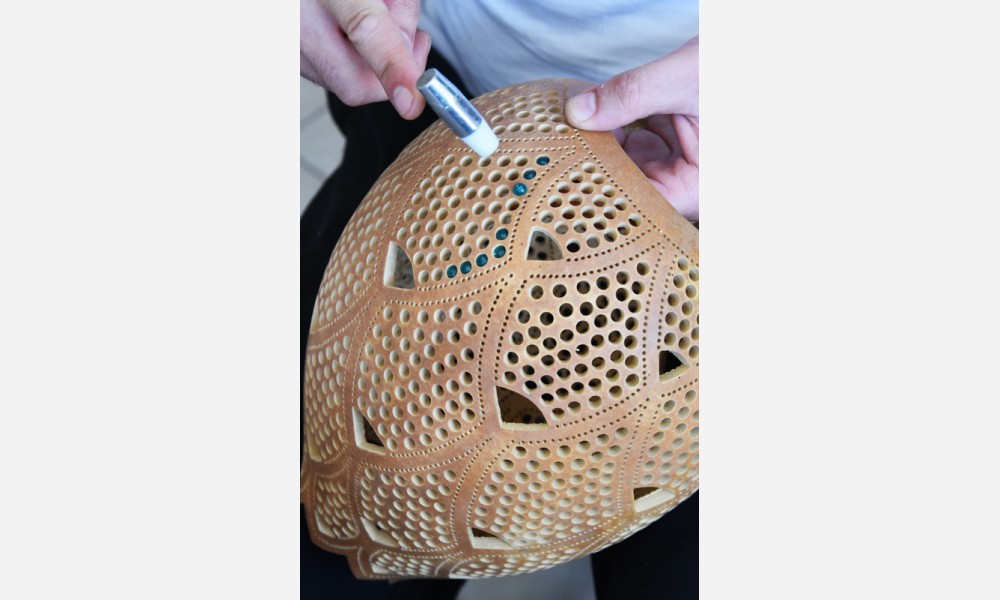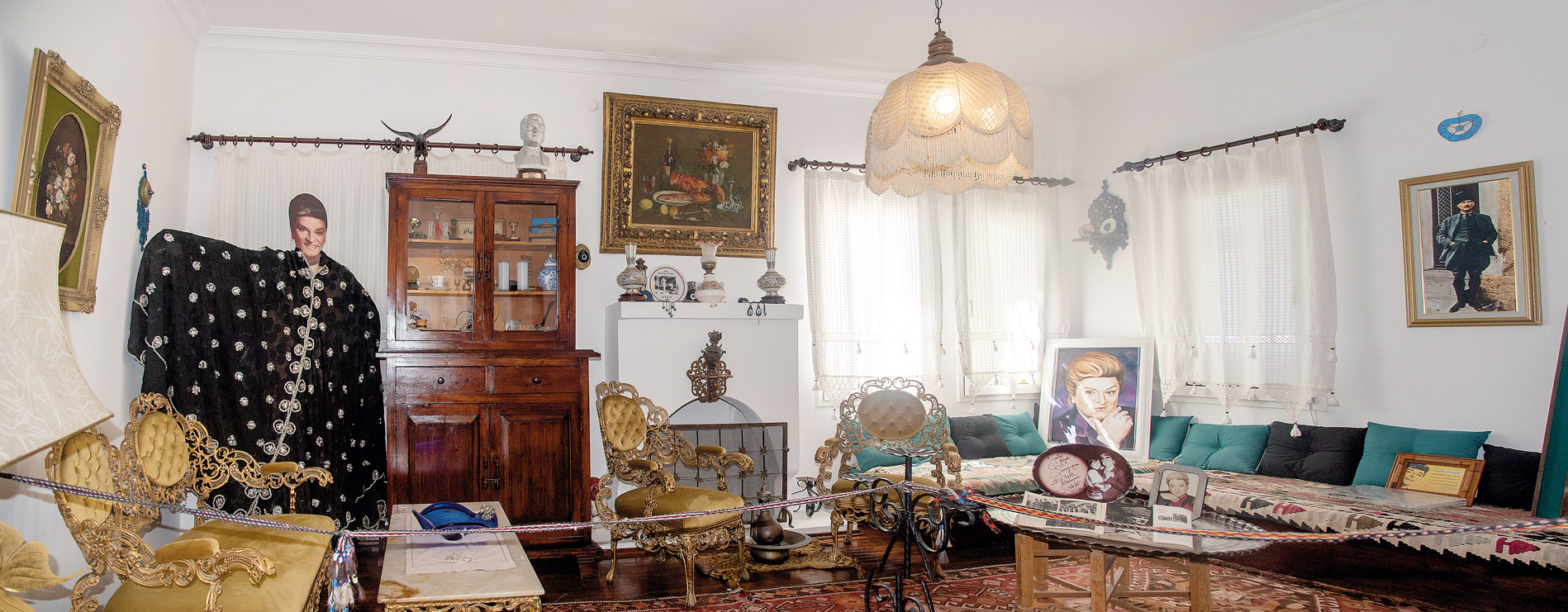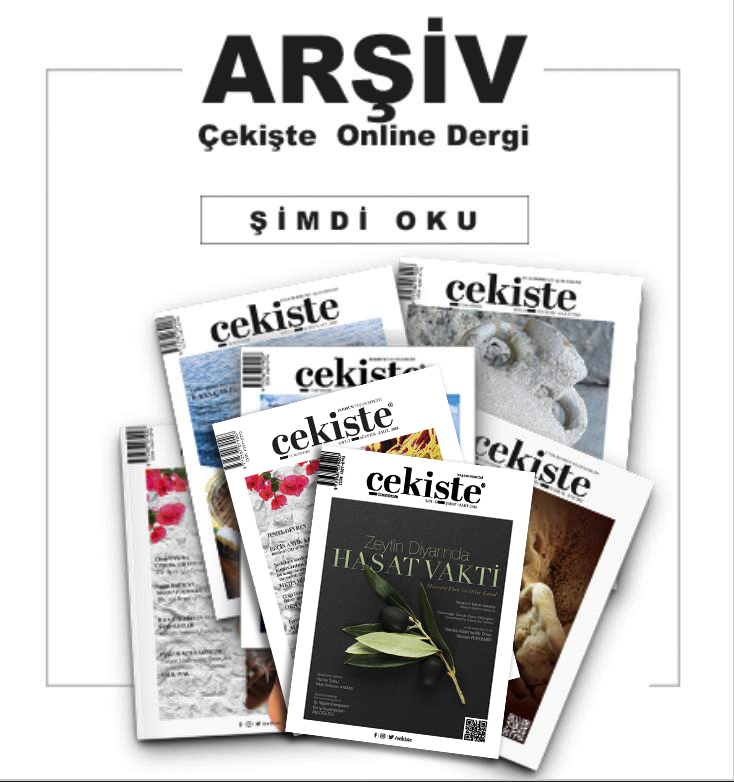Starting from a seed to art...

A seed falls to the ground with a lot of labour. With the harvest starts the separation from the soil. Then, the waiting, which takes seasons, begins. Under the rain or under the snow, it waits and waits... It forms a sallow scab just as a wound. It throws off the rust and dirt with the touch of skilled hands. From the bottom, which is opened carefully, what remains in it falls off. Hundreds of holes in its body get beaded with colourful beads, like pieces of jewellery. One night, after the entire struggle, gourd becomes an inspiration to the light, sparkling, patterned and varicoloured.
If you happen to pass by Gumusluk one night, when you arrive in Derekoy, the shops light up, where hundreds of gourds colour to the pitch-black of the night, will welcome you. We shall indicate at the beginning of the article that the crafted and unique lightning accessories made of gourds can be found not only in Derekoy but also in many different places in Bodrum.
Down the ages, gourds, which have been used as something functional, had sometimes been used as fishermen's net buoys, a salt pot in the kitchen or a water pot. Dried gourds have been used as a raw material in different areas, from instrument making to baby doll making. While dried gourds with their seeds inside became rattles for babies, the cleaned ones without seeds used by the people in the plantations as water pots. As a gourd is almost impossible to sink in the water, I think we should not exaggerate if we say that a generation learned how to swim using it.
Sukabak Bodrum has been producing a broad array of lampshades and chandeliers for 16 years in its workshop studio. At the studio, where 3 generations of the family work together, from the youngest to the oldest, each side of the business is kept by all the members of the family. The dusty and the drilling part of the job is the duty of the men of the family. The beading process depends on the ladies, and the children help to install the electrical components.
The specifics of gourd carving are too numerous to be counted. A gourd completes the transformation after 17 separate levels of entreating.
The gourds, which are planted in April and harvested between August and September, even require a particular care while harvesting. They get dried in the shade until the next April. In this while, often a black layer may appear on them. The carefully dried gourds begin to be processed in the skilled hands of the master. Cleaning the exterior surface is one of the most difficult processes. The surface, which gets wet using water for a while, gets scrubbed using steel wool. After the cleaning, the bottom requires to be opened. Drawing a symmetric circle, the bottom gets staved in and inside the gourd gets cleaned. In the drilling process in a wide array ofpatterns are applied, the whole attention of the master focuses on the pattern. Starfish, fish, flowers, geometric motifs... The only limit is the imagination of the master. After dozens of holes in the body, colourful beads take the turn. The pattern gets beaded with the help of a plastic tipped hammer.
At the end of the day, the story, beginning in the soil, lights the night in the shape of an artefact, where the light dances.














